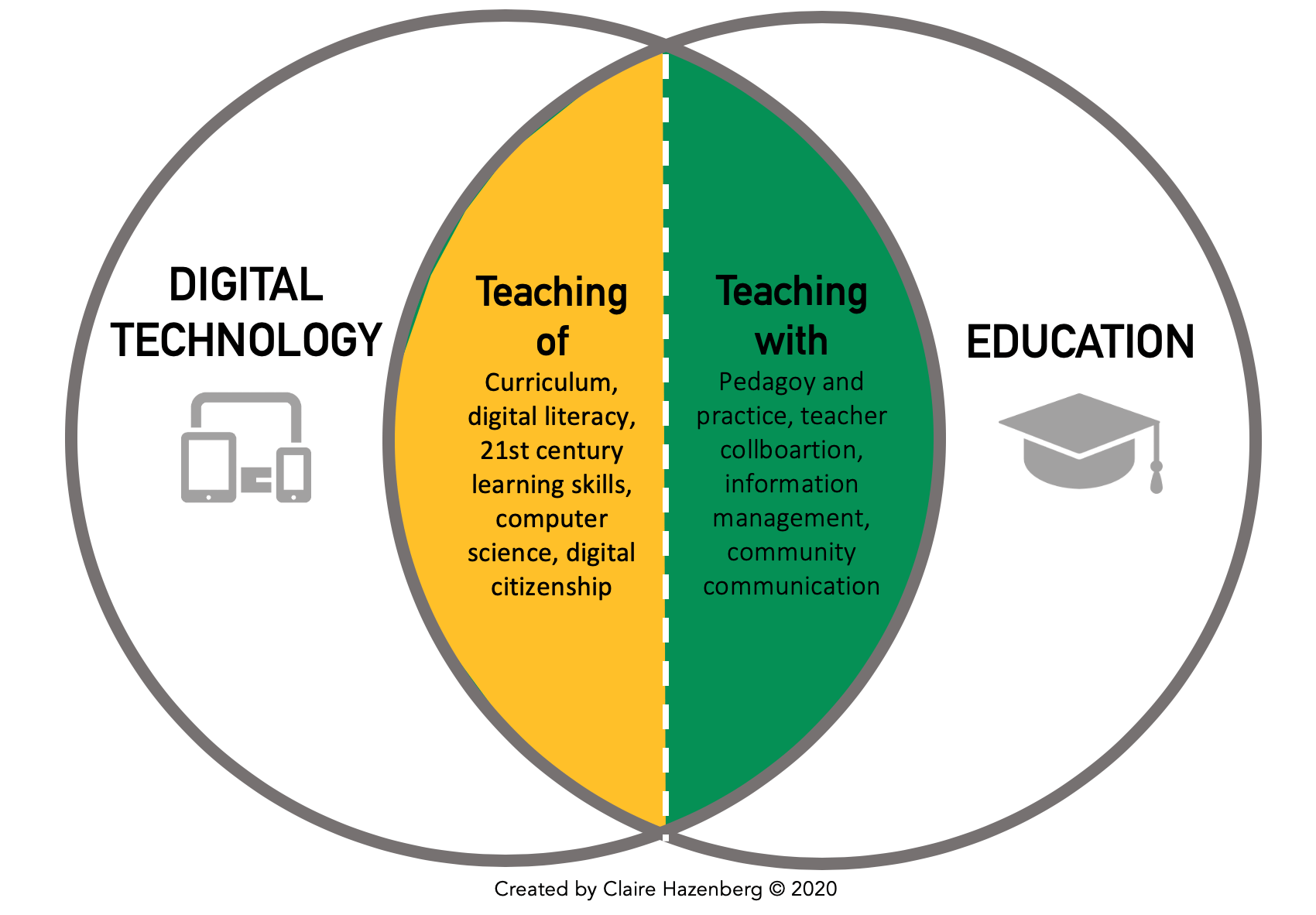While I have studied and worked with educational technology for some time, I am yet to definitely form a position on the role of digital technology (DT) in education settings. This is because I believe educational institutions are define by contextual factors such as culture, language, learner dispositions and teacher beliefs, meaning that no one setting is the same, thus the role and purpose of digital technology will differ greatly (Chai, Koh, Lim, Tsai, 2014).
While I believe the relationship that occurs when DT and education intersects looks differently across all educational settings, what all settings have in common is that within this relationship exists either the “teaching of” and “teaching with” digital technology. See diagram below.

I believe DT has the ability to transform education, from equipping learners with 21st century skills to enhancing teacher practice and communication. However, as Selwyn (2016) and Collins & Halverson (2009) and many others have discussed, it is imperative that we closely consider the claims made about technology in education. To do this and ensure the effective use of DT in education settings, educators, leaders and policy makers must maintain a critical lens and engage in evidence-based decision making.
References
Chai, S., Koh, E., Lim, P., & Tsai, C. (2014). Deepening ICT integration through multilevel design of technological pedagogical content knowledge. Journal of Computers in Education, 1(1), 1-17.
Collins, A. & Halverson, R. (2009). Rethinking Education in the Age of Technology: The Digital Revolution and Schooling in America. Teachers College Press, New York, NY, USA.
Selwyn, N. (2016). Is technology good for education? Cambridge, UK: Polity Press.

Leave a Reply